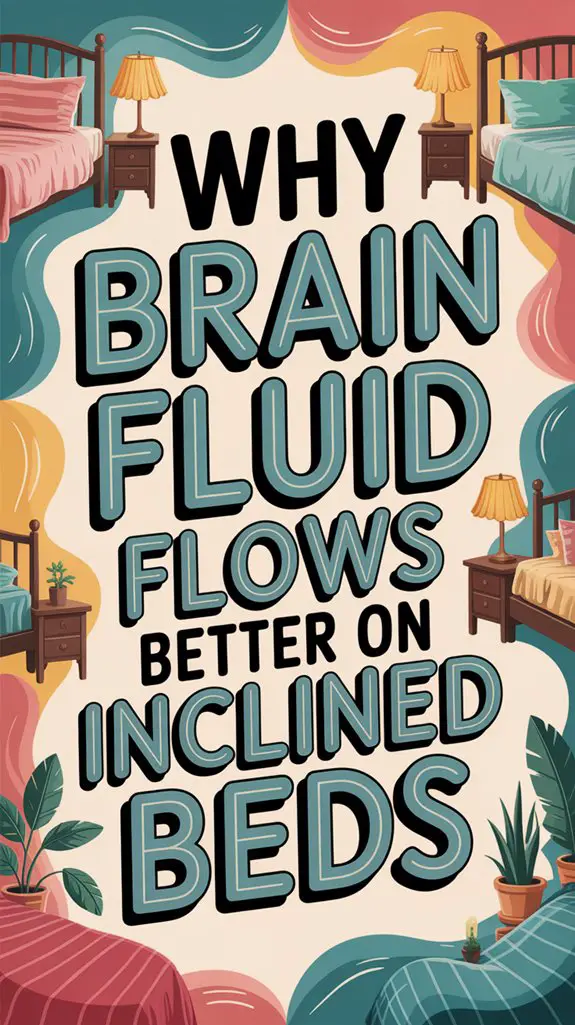Sleeping on an inclined bed? It’s been a game changer for me!
I remember the first time I tried it. I woke up feeling like my brain was fueled by rocket fuel. Seriously! Elevating my head not only helps my cerebrospinal fluid flow better, but it also makes me feel lighter and clear-headed.
Gravity’s my secret weapon here. It helps with drainage, making me feel fresh as a daisy. Who doesn’t want to ditch that annoying brain fog, right?
At Corala Blanket, we’re all about promoting better sleep. I’ve learned that a simple change in position can work wonders. It’s crazy how much our sleep setup matters!
Have you ever tried sleeping inclined? Trust me; your brain will thank you!
Table of Contents
Quick Takeaways
- Inclined positions enhance cerebrospinal fluid (CSF) circulation by utilizing gravity to improve flow rates and drainage efficiency.
- The Myodural Bridge (MDB) facilitates CSF movement, which is supported by head movements when lying at an incline.
- Elevated sleeping positions lower intracranial pressure, optimizing venous drainage and reducing the risk of pressure-related issues.
- Inclining the body promotes the glymphatic system’s function, enhancing the clearance of toxic waste like β-amyloid during sleep.
- Improved CSF flow during inclined sleep contributes to better cognitive performance, sharper thinking, and overall brain health.
Enhanced Cerebrospinal Fluid Flow Mechanisms
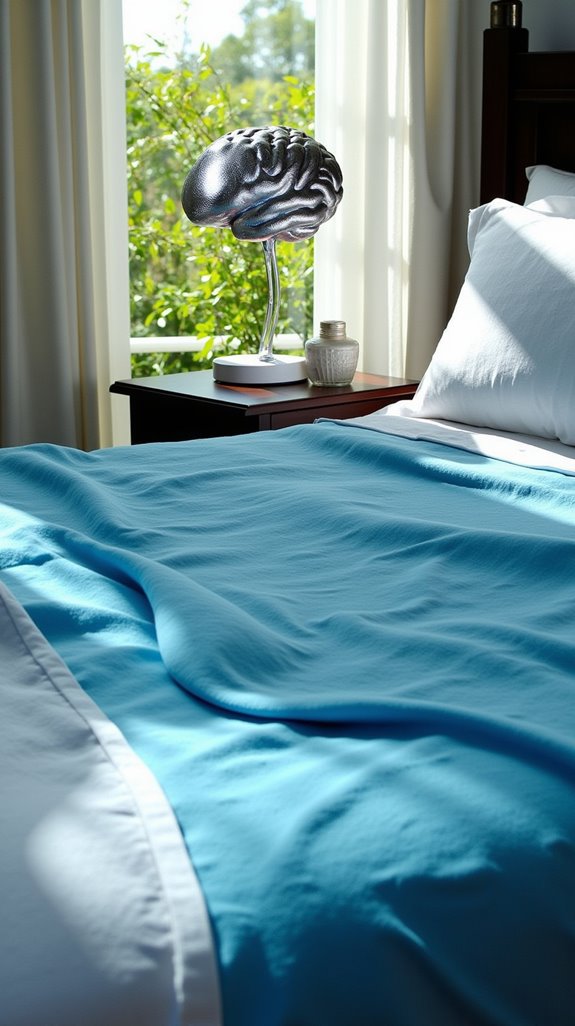
When we talk about cerebrospinal fluid (CSF) flow, we’re diving into something truly fascinating that plays a huge role in keeping our brains healthy.
CSF circulates through the ventricles and subarachnoid space, and it’s the choroid plexus that does most of the heavy lifting by secreting this critical fluid.
CSF flows through the brain’s ventricles, powered by the choroid plexus, which diligently secretes this vital fluid.
Have you ever thought about how gravitational influences affect CSF circulation? Myodural Bridge (MDB) plays a vital role in facilitating CSF flow during head movements, enhancing the effectiveness of this intricate system.
Cardiac pulsations and even head movements can boost flow rates. It’s like a dance in your body, ensuring that metabolic waste is swiftly cleared out.
Impact on Intracranial Pressure and Venous Drainage
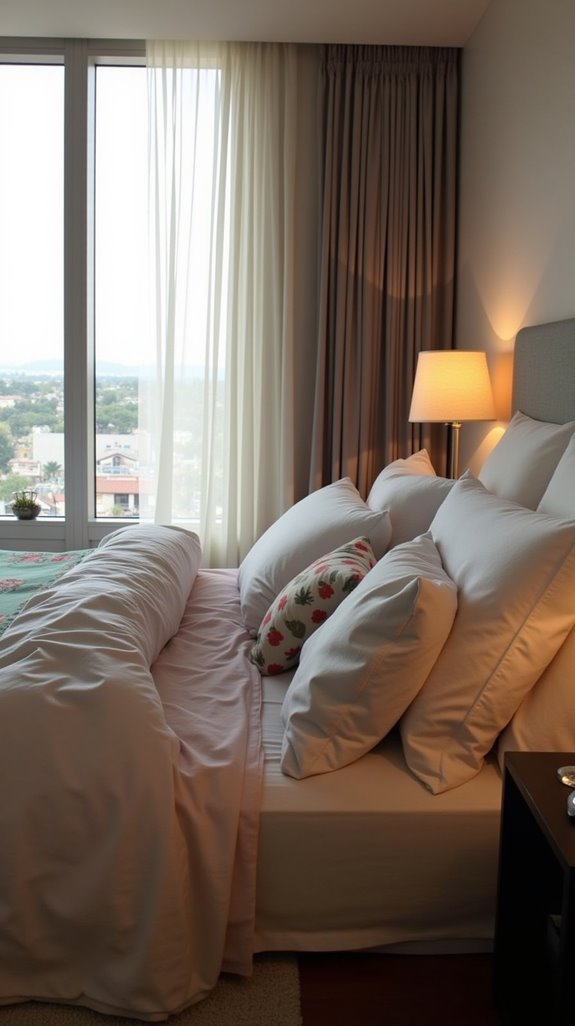
While it might seem like our brains are simply floating along, the truth is they’re always feeling the effects of gravity—especially when we shift our bodies.
When we recline, intracranial pressure can creep up, but tilting keeps that in check. You know why? Gravity helps our blood flow better, improving venous drainage! Elevated sleeping positions have been shown to effectively reduce this pressure, enhancing overall circulation.
It’s like giving our veins a boost—when our body’s inclined, smaller pathways take over, keeping things flowing smoothly. This balance prevents that nasty pressure buildup in our heads. Maintaining effective CSF circulation is also crucial for overall brain health and preventing toxic substance accumulation.
Benefits for Glymphatic System Efficiency
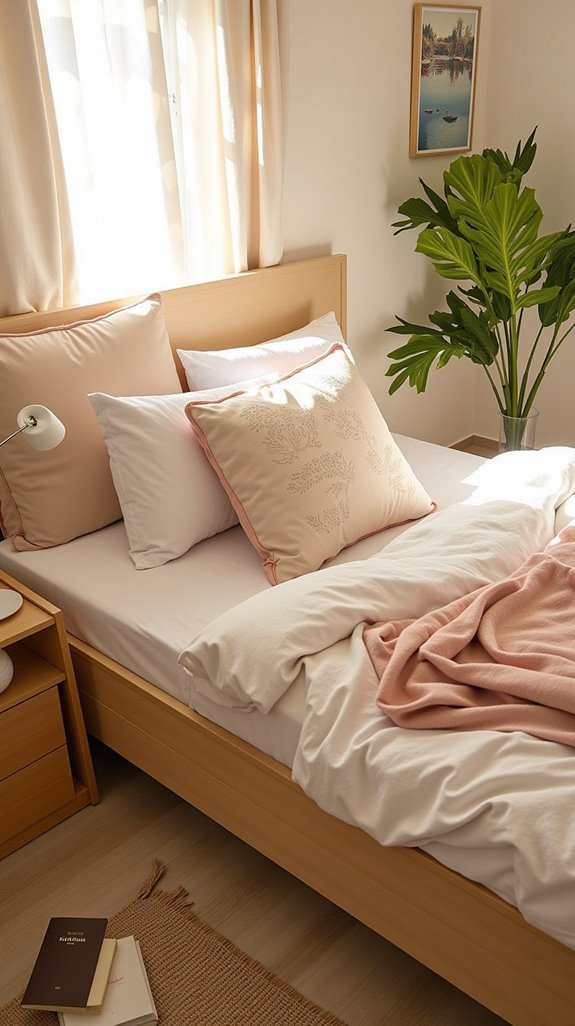
If you think about how much we rely on sleep to feel good and function properly, you’ll see why the benefits of an inclined bed for our glymphatic system are pretty amazing. Inclined sleeping uses gravity to enhance glymphatic efficiency, helping clear out toxic waste like β-amyloid. Who wouldn’t want their brain to feel refreshed and ready to conquer the day? When we sleep at an incline, it supports better blood flow and reduces congestion, making waste clearance even smoother. Additionally, research indicates that body position affects the flow of cerebrospinal fluid, which further enhances the benefits of inclined beds. Elevated sleep positions have also been shown to improve drainage of the brain’s interstitial fluid, which is crucial for clearing metabolic waste. Plus, improved sleep quality means our brain gets a dedicated “rinse cycle” each night. It’s like treating your mind to a spa day—every night!
Implications for Neurological Health and Development
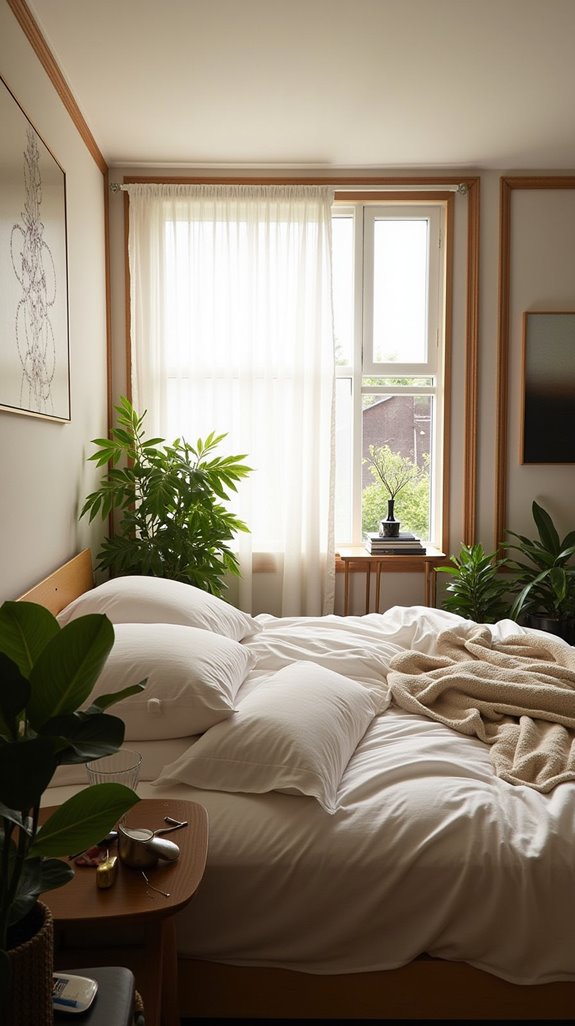
As you can envision, the way we sleep can have a big impact on our brain health and development.
When we sleep inclined, we might enhance our neurodevelopmental implications, supporting not just our brain’s physical structure, but also our cognitive performance.
Picture this: better cerebrospinal fluid flow helps clear out waste, almost like giving our brain a revitalizing cleanse.
Who wouldn’t want sharper thinking and improved focus?
Plus, improved blood circulation could fend off those pesky brain fog days.
Furthermore, studies suggest that inclined sleeping positions can enhance recovery after surgery, promoting overall brain health.
FAQ
Can Inclined Bed Therapy Help With Sleep Apnea?
Absolutely, inclined bed therapy can greatly help with sleep apnea. By sleeping in an inclined position, I’ve found my breathing improves, snoring decreases, and my overall sleep quality enhances, making my nights much more restful.
How Does Body Position Affect Headaches?
Body position’s impact on headaches is monumental! I’ve found that proper body alignment dramatically enhances headache relief. By adjusting my posture, I’ve reduced tension and improved my overall comfort during those stubborn headache days.
Is Inclined Bed Therapy Safe for All Ages?
Inclined bed therapy isn’t safe for all ages. I prioritize safety measures and age considerations: infants face serious risks, while adults and the elderly may benefit but should consult health professionals for personalized guidance.
Can It Benefit Patients With Chronic Pain?
Absolutely, I believe inclined bed therapy can offer pain relief for chronic pain patients. Proper body alignment enhances circulation and may facilitate recovery, promoting healing and reducing discomfort considerably over time. It’s worth considering.
How Long Should I Sleep in an Inclined Position?
Think of sleep duration like a well-crafted symphony; I recommend aiming for 7 to 9 hours in an inclined position. Adjust the angle to match your comfort level, ensuring a powerful restorative experience each night.
References
- https://www.frontiersin.org/journals/aging-neuroscience/articles/10.3389/fnagi.2024.1454282/full
- https://www.frontiersin.org/journals/physiology/articles/10.3389/fphys.2019.00397/full
- https://pmc.ncbi.nlm.nih.gov/articles/PMC7698404/
- https://www.medicalnewstoday.com/articles/inclined-bed
- https://pmc.ncbi.nlm.nih.gov/articles/PMC10290349/
- https://medicine.washu.edu/news/disrupted-flow-of-brain-fluid-may-underlie-neurodevelopmental-disorders/
- https://www.nature.com/articles/s41598-021-93767-8
- https://www.frontiersin.org/journals/human-neuroscience/articles/10.3389/fnhum.2021.737217/full
- https://www.kenhub.com/en/library/anatomy/circulation-of-the-cerebrospinal-fluid
- https://www.ncbi.nlm.nih.gov/books/NBK470578/
- https://www.ncbi.nlm.nih.gov/books/NBK519007/
- https://www.youtube.com/watch?v=kaOphkMv2pM
- https://pmc.ncbi.nlm.nih.gov/articles/PMC10100470/
- https://pmc.ncbi.nlm.nih.gov/articles/PMC8710028/
- https://www.frontiersin.org/journals/human-neuroscience/articles/10.3389/fnhum.2024.1463740/full
- https://rc.umn.edu/project/using-imaging-examine-cerebrospinal-fluid-flow
- https://pubs.aip.org/aip/pof/article/36/12/121908/3324004/Modeling-of-the-brain-movement-and-cerebrospinal
- https://mommypotamus.com/inclined-bed-therapy/
- https://www.originsofhealth.com/a-new-angle-on-detoxification/
- https://www.frontiersin.org/journals/neuroscience/articles/10.3389/fnins.2022.884234/full
- Mood Makers: Small Details That Transform a Room - October 17, 2025
- Why Ancient Civilizations Elevated Their Beds - October 17, 2025
- Why Elevate Your Bed With Wooden Blocks? - October 17, 2025

